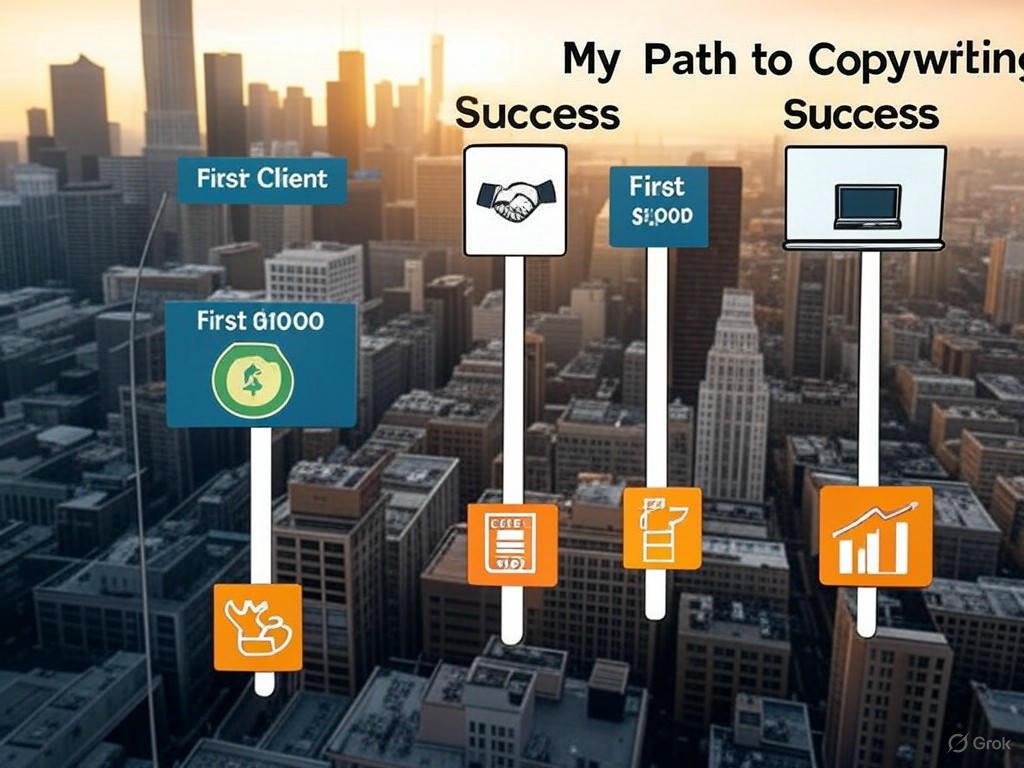I’ll never forget the moment I realized I could make money copywriting. It was a late night, scrolling through job boards, feeling stuck in a job that drained my soul. I stumbled across a listing for a freelance copywriter, and something clicked. The idea of using words—my words—to persuade, inspire, and earn a living felt like a dream. Fast forward a few years, and I’ve built a career out of it, with all the ups, downs, and lessons learned along the way. If you’re curious about how to make money copywriting, I’m here to share my story, practical tips, and everything I wish I knew when I started.
Copywriting isn’t just about stringing words together; it’s about crafting messages that connect with people, drive action, and deliver results for businesses. Whether you’re a beginner wondering how to break into the field or someone looking to level up, this guide will walk you through the steps to turn your writing skills into a paycheck. Let’s dive in.
What Is Copywriting, and Why Does It Pay?

Before we get into the nitty-gritty of how to make money copywriting, let’s clarify what copywriting actually is. At its core, copywriting is the art and science of writing persuasive content to promote a product, service, or idea. Think of the emails that convince you to click “Buy Now,” the website headlines that grab your attention, or the social media ads that make you stop scrolling. That’s copywriting.
What makes copywriting lucrative is its value to businesses. Good copy drives sales, builds brands, and turns casual browsers into loyal customers. Companies are willing to pay top dollar for writers who can deliver results. According to industry reports, freelance copywriters in the U.S. can earn anywhere from $30 to $150 per hour, with top-tier writers pulling in six figures annually. Not bad for something you can start from your couch, right?
But here’s the catch: making money copywriting isn’t a get-rich-quick scheme. It takes skill, hustle, and a willingness to learn. My journey wasn’t all smooth sailing, but every stumble taught me something new. Let’s break down how you can start making money copywriting, step by step.
Step 1: Hone Your Writing Skills
When I started, I thought I was a decent writer. I mean, I aced English in high school and could whip up a mean blog post. But copywriting? It’s a different beast. It’s not about flowery prose or showing off your vocabulary. It’s about clarity, persuasion, and understanding what makes people tick.
If you’re new to copywriting, start by sharpening your skills. Read books like The Copywriter’s Handbook by Robert Bly or Everybody Writes by Ann Handley. These were game-changers for me, teaching me how to write concise, compelling copy that resonates with readers. You can also find free resources online—blogs, YouTube tutorials, and podcasts like The Copywriter Club are goldmines.
Practice is key. Early on, I spent hours rewriting ads I found online, trying to make them punchier or more persuasive. I’d take a boring product description and rewrite it to sound irresistible. It felt silly at first, but it helped me develop a knack for turning bland into brilliant.
Pro tip: Learn the basics of persuasion. Study concepts like AIDA (Attention, Interest, Desire, Action) and how to write headlines that grab attention. These fundamentals will set you apart when you’re pitching clients.
Read more: Unlock Your Potential – The Ultimate Online Earning Website for Students
Step 2: Find Your Niche

One of the biggest lessons I learned about how to make money copywriting is the power of niching down. When I started, I took any gig I could find—pet food ads, real estate emails, even a bizarre project for a novelty sock company. It was exhausting, and I wasn’t great at any of it because I was spreading myself too thin.
Then, I discovered the magic of specializing. I’ve always been passionate about health and wellness, so I started focusing on copywriting for fitness brands, supplement companies, and wellness coaches. Suddenly, I wasn’t just a writer—I was a health copywriter. Clients saw me as an expert, and I could charge more because I understood their audience and industry.
Finding your niche doesn’t mean you’re stuck forever, but it gives you a starting point. Ask yourself: What topics do you love? What industries do you know well? Tech, fashion, finance, travel—there’s a demand for copywriters in every field. Niching down helps you stand out in a crowded market and makes it easier to market yourself.
Step 3: Build a Portfolio That Shines
Here’s a harsh truth: no one will hire you without proof you can deliver. When I was starting out, I didn’t have any “real” copywriting samples, and I was terrified of pitching clients empty-handed. So, I got creative.
I wrote fake ads for imaginary products—a vegan protein powder, a luxury travel agency, a productivity app. I treated these like real projects, complete with headlines, body copy, and calls to action. I threw them together in a simple Google Doc, added a short explanation of my process, and called it my portfolio. It wasn’t fancy, but it worked.
You can do the same. Create 3-5 samples that showcase your skills and align with your niche. If you have any writing experience—blog posts, social media captions, even emails you’ve written for work—repurpose them to show your versatility. Once you land a few clients, replace your speculative samples with real work.
For a professional touch, build a simple website using platforms like Wix or Squarespace. Mine was bare-bones at first: a homepage, an “About Me” section, and a portfolio page. It didn’t need to be perfect—it just needed to show I was serious.
Read more: Unveiling the Power of LinkDominatorAI – A Comprehensive Review
Step 4: Find Copywriting Gigs
Now, let’s talk about the part everyone wants to know: how to actually make money copywriting. Finding clients was the scariest part for me. I’d spend hours refreshing job boards, convinced I wasn’t good enough to compete. But here’s what I learned: clients are out there, and they’re looking for writers like you.
Start with freelance platforms like Upwork, Fiverr, or LinkedIn. These sites are crowded, but they’re a great place to get your feet wet. When I landed my first Upwork gig—a $50 product description—I was over the moon. It wasn’t much, but it proved I could do this.
Here’s how to stand out on these platforms:
Write a killer profile: Be clear about your niche and what you offer. Instead of “Freelance Writer,” try “Health and Wellness Copywriter Specializing in Engaging Email Campaigns.”
Personalize your pitches: Generic proposals get ignored. Mention something specific about the client’s business and how you can help.
Start small: Low-paying gigs can lead to bigger opportunities. My $50 gig turned into a $500 project with the same client.
Beyond platforms, tap into your network. Tell friends, family, and former colleagues you’re a copywriter. I landed a steady client through a friend who worked at a small marketing agency. Cold emailing businesses in your niche can also work—just keep it short, professional, and focused on how you can solve their problems.
Step 5: Deliver Results and Charge What You’re Worth
Once you land clients, the real work begins. Early on, I made the mistake of overpromising and underdelivering. I’d take on tight deadlines or projects outside my skill set, and it left me stressed and clients disappointed. Lesson learned: only take on what you can handle, and always aim to exceed expectations.
To make money copywriting, you need to deliver results. That means understanding your client’s goals—more sales, more clicks, more engagement—and tailoring your copy to achieve them. Ask questions, research their audience, and don’t be afraid to suggest improvements. One client thanked me for tweaking their call to action, which doubled their email open rates. That kind of impact keeps clients coming back.
As you gain experience, raise your rates. I started at $25 an hour, which felt like a fortune at the time. But as my skills and confidence grew, I bumped it to $50, then $75. Today, I charge project-based fees, often $500-$2,000 for a single campaign. Know your worth, and don’t be afraid to ask for it.
Read more: Side Jobs to Make Money from Home – A Diverse Range of Opportunities
Step 6: Keep Learning and Growing
The copywriting world moves fast. Trends change, platforms evolve, and what worked yesterday might flop tomorrow. To stay competitive, you need to keep learning. I make it a habit to read industry blogs like Copyblogger and take online courses when I can. Following copywriting pros on social media also keeps me inspired.
Experiment with new formats, too. When I started, I focused on emails and landing pages. But as social media ads and video scripts became more popular, I taught myself how to write them. Being versatile makes you more valuable and opens up new income streams.
One thing that surprised me was how much I learned from my clients. Every project taught me something—whether it was nailing a brand’s tone or understanding SEO basics. Embrace feedback, even when it stings. It’s how you get better.
Overcoming the Challenges
I’d be lying if I said making money copywriting was all sunshine and paychecks. There were moments I wanted to quit—like when a client ghosted me after I spent weeks on a project, or when I struggled to balance multiple deadlines. Freelancing can be lonely, and impostor syndrome is real.
What kept me going was my “why.” I didn’t want to go back to a soul-sucking 9-to-5. I wanted the freedom to work from anywhere, to write for a living, to build something of my own. On tough days, I’d remind myself of that. I also found a community of writers online—Reddit forums, Facebook groups, Twitter chats—who cheered me on and shared advice.
If you’re feeling stuck, reach out to other writers. Take breaks when you need them. And celebrate your wins, no matter how small. Landing your first $100 gig? That’s huge. Treat yourself to a coffee and keep pushing.
The Future of Copywriting: Why Now Is the Time
If you’re wondering whether copywriting is still a viable way to make money in 2025, let me reassure you: the demand is stronger than ever. Businesses are leaning harder into digital marketing, and they need skilled writers to cut through the noise. E-commerce, content marketing, and social media are booming, and every one of those industries relies on copywriting.
Plus, the rise of AI tools has made copywriting more accessible, not less relevant. While AI can churn out basic content, it can’t replicate the human touch—empathy, creativity, and a deep understanding of what makes people act. That’s where you come in. Clients are willing to pay for copy that feels authentic and connects on a human level.
My Final Thoughts
Learning how to make money copywriting changed my life. It gave me freedom, purpose, and a career I’m genuinely excited about. It wasn’t easy, and there were plenty of late nights and self-doubt along the way. But every step—every rejection, every small win—brought me closer to where I am today.
If you’re ready to start your own copywriting journey, take it one step at a time. Sharpen your skills, find your niche, build a portfolio, and start pitching. Be patient with yourself, but don’t be afraid to hustle. The world needs your words, and there’s money to be made sharing them.
So, what’s stopping you? Grab a notebook, write a headline, and start crafting your future. I’m rooting for you.






